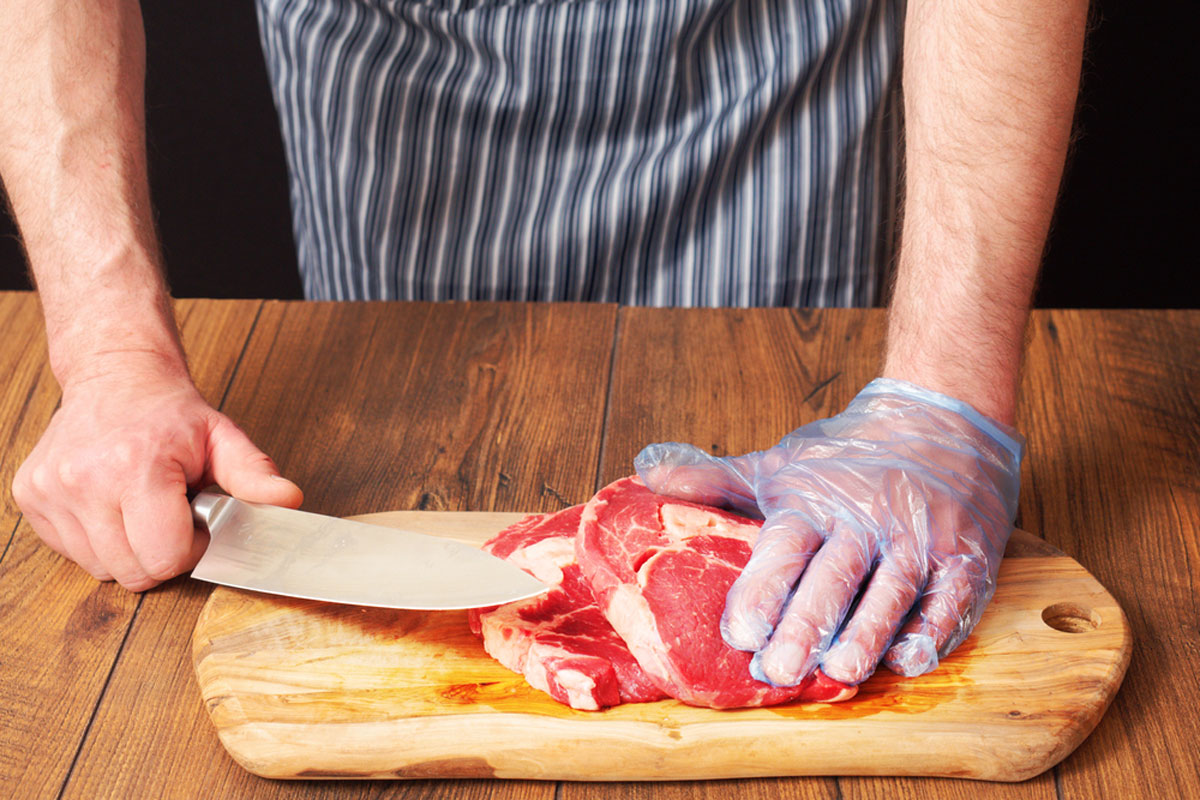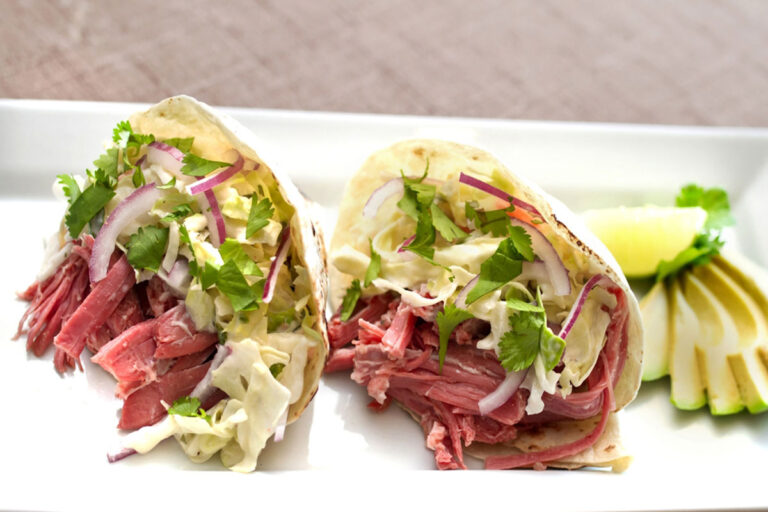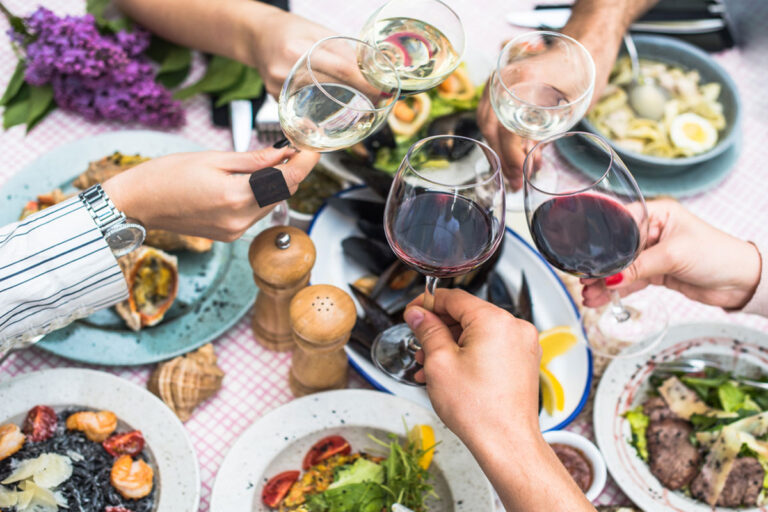Introduction to Traditional Irish Butchery
In recent years, there has been a significant revival of traditional Irish butchery practices, reflecting a broader global trend towards sustainable and ethical eating. Central to this movement is the concept of nose-to-tail eating, a philosophy that emphasizes using every part of the animal to minimize waste and honor the life taken. This resurgence is not just about meat consumption but also about reconnecting with cultural heritage, supporting local economies, and promoting ecological responsibility.
Traditional Irish butchery dates back centuries, deeply intertwined with the island’s agrarian lifestyle. Farmers and butchers in rural communities practiced nose-to-tail eating out of necessity and respect for their livestock. Every part of the animal had a purpose, from the prime cuts of meat to the organs, bones, and even the blood. This holistic approach ensured that nothing went to waste and provided a diverse array of nutrients and flavors to the diet.
The industrialization of food production in the 20th century led to a decline in these traditional practices. The rise of supermarkets and the demand for convenience meant that consumers became increasingly distanced from the origins of their food. Cuts of meat became standardized, and the appreciation for lesser-known parts of the animal waned. However, in recent years, there has been a growing awareness of the environmental and ethical issues associated with industrial meat production. This awareness has sparked a renewed interest in traditional butchery and nose-to-tail eating.
The revival of these practices in Ireland is being championed by a new generation of butchers, chefs, and farmers committed to sustainability and quality. They are reintroducing consumers to the rich culinary heritage of Ireland, showcasing the versatility and flavor of every part of the animal. This movement is not just a return to the past but a progressive step towards a more sustainable and ethical future.
Techniques and Traditions of Irish Butchery
Let us now explore the specific techniques and traditions that define traditional Irish butchery. These methods are integral to the nose-to-tail philosophy and have been handed down through generations, preserving not only the skills but also the cultural significance of butchery in Ireland.
The Art of Butchery
Traditional Irish butchery is characterized by meticulous attention to detail and a deep understanding of the animal. Butchers use specific techniques to ensure that every part of the animal is utilized to its fullest potential. Here are some key practices:
- Breaking Down the Carcass:
The process begins with breaking down the animal into primary cuts. This step requires skill and precision, as it determines how the rest of the animal will be utilized. Each cut is made with a purpose, ensuring minimal waste. - Utilizing Offal:
Offal, or the internal organs, is an essential part of traditional butchery. Irish butchers have long valued these parts for their rich flavors and nutritional benefits. Liver, kidneys, heart, and tripe are common components of traditional Irish dishes. - Making Use of Bones:
Bones are not discarded but are used to make stocks and broths. These form the base for many traditional soups and stews, adding depth and flavor. Bone marrow is also a prized delicacy, often roasted or used in soups. - Curing and Preserving:
Traditional methods of curing and preserving meat, such as smoking, salting, and drying, are vital techniques. These methods not only extend the shelf life of the meat but also enhance its flavor. Classic Irish products like bacon and ham owe their distinctive tastes to these techniques. - Crafting Sausages and Puddings:
Sausages and blood puddings (black pudding) are made using parts of the animal that might otherwise be overlooked. These items reflect the creativity and resourcefulness inherent in traditional butchery.
Cultural Significance
Butchery in Ireland has always been more than just a trade; it is a cultural practice that reflects the country’s rural heritage. In the past, butchery was a communal activity, often carried out on farms where families and neighbors would come together to process animals. This communal aspect fostered a sense of connection and respect for the food being prepared.
Seasonal festivals and celebrations frequently included butchery and the preparation of special dishes. For example, the traditional Irish feast of Samhain (now Halloween) often involved the slaughter of livestock, marking the end of the harvest season and the beginning of winter. This practice ensured that communities had sufficient food for the colder months and reinforced the importance of utilizing every part of the animal.
Modern Revival
Today, the techniques and traditions of Irish butchery are being revived by a new generation of butchers and chefs. These modern practitioners are dedicated to preserving the craftsmanship and ethos of their forebears while also innovating and adapting to contemporary tastes. They are educating consumers about the benefits of nose-to-tail eating, not just for sustainability but also for the culinary richness it offers.
Workshops and courses are becoming increasingly popular, where participants can learn the skills of traditional butchery. These educational initiatives are crucial in passing on the knowledge and ensuring that these time-honored techniques continue to thrive.
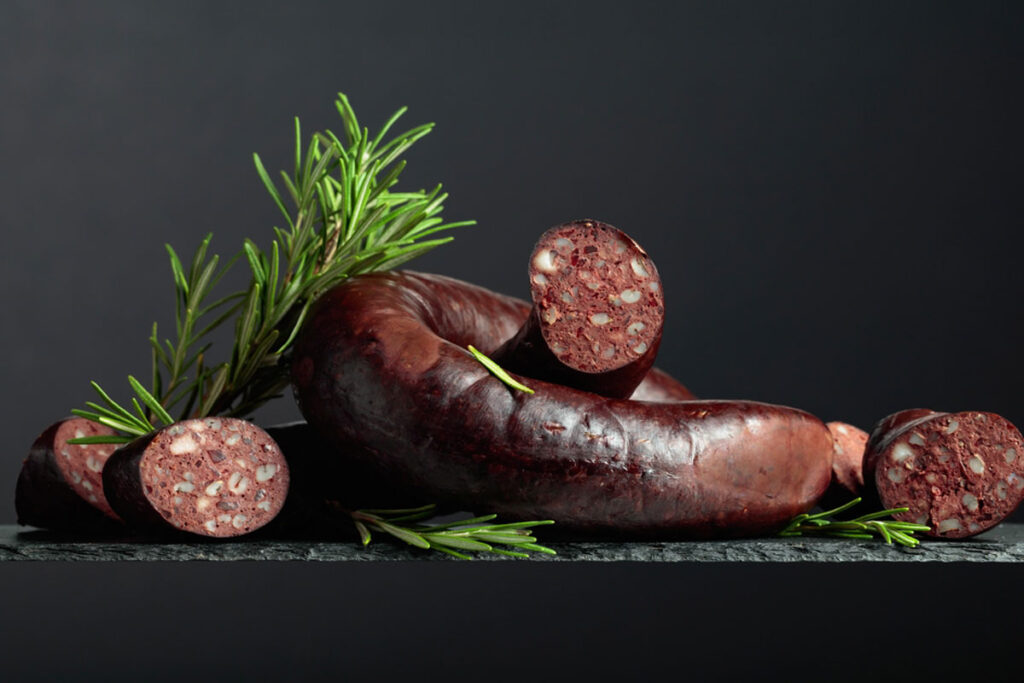
Nutritional and Environmental Benefits of Nose-to-Tail Eating
The resurgence of traditional Irish butchery and nose-to-tail eating is not just about honoring heritage; it’s also about embracing a more sustainable and nutritious approach to meat consumption.
Nutritional Benefits
Nose-to-tail eating involves consuming a wide variety of animal parts, each offering unique nutritional benefits. Here are some key aspects:
- Diverse Nutrient Profile:
Organ Meats: Liver, kidneys, heart, and other organ meats are nutrient powerhouses. They are rich in vitamins A, D, E, and K, as well as essential minerals like iron, zinc, and selenium. Organ meats are also an excellent source of high-quality protein and healthy fats.
Bone Marrow: Bone marrow is high in fat and contains important nutrients like collagen, glycine, and glucosamine, which are beneficial for joint health and skin elasticity.
Bones and Cartilage: Using bones and cartilage to make broths and stocks releases collagen, amino acids, and minerals like calcium and magnesium, which support bone health and overall wellness. - Balanced Consumption:
Consuming a variety of animal parts ensures a more balanced intake of nutrients. While muscle meats are high in protein, they lack some of the vitamins and minerals found in organ meats and bones. Nose-to-tail eating provides a holistic approach to nutrition, offering a more comprehensive nutrient profile. - Enhanced Digestion:
Traditional practices like making bone broth and fermenting meats can improve digestion. Bone broth, in particular, is known for its gut-healing properties due to the gelatin and amino acids it contains.
Environmental Benefits
The environmental benefits of nose-to-tail eating are significant, contributing to a more sustainable and responsible food system:
- Reduced Waste:
By utilizing every part of the animal, nose-to-tail eating significantly reduces food waste. In conventional meat production, many parts of the animal are discarded, contributing to environmental degradation. Nose-to-tail practices ensure that all parts are used, aligning with sustainable consumption principles. - Lower Carbon Footprint:
Reducing waste and making full use of each animal helps lower the carbon footprint associated with meat production. It requires fewer animals to meet dietary needs, which in turn reduces the greenhouse gases emitted from livestock farming. - Support for Local and Sustainable Farming:
Traditional butchery often involves sourcing animals from local, small-scale farms that practice sustainable agriculture. These farms tend to have lower environmental impacts compared to large industrial operations. By supporting these farms, consumers are contributing to more sustainable food systems. - Biodiversity Preservation:
Sustainable farming practices often involve rotational grazing and maintaining diverse ecosystems. This contrasts with monoculture practices in industrial farming, which can deplete soil nutrients and harm local wildlife. Supporting traditional butchery and local farms helps preserve biodiversity and maintain healthier ecosystems.
Embracing a Nose-to-Tail Lifestyle
Embracing nose-to-tail eating requires a shift in mindset and culinary practices. It encourages consumers to explore new flavors and cooking methods, promoting a deeper appreciation for the food they eat. Here are some practical tips for integrating nose-to-tail principles into your diet:
- Start Small:
Begin by incorporating small amounts of organ meats into familiar dishes. For example, add liver to meatloaf or blend heart into ground beef for burgers. - Learn New Recipes:
Explore traditional recipes that utilize a variety of animal parts. Dishes like Irish stew, made with lamb neck and root vegetables, or beef bone broth are excellent starting points. - Visit Local Butchers:
Support local butchers who practice traditional methods. They can provide guidance on how to cook different cuts and suggest recipes. - Educate Yourself:
Read books and attend workshops on traditional butchery and nose-to-tail eating. Understanding the techniques and benefits can deepen your commitment to this sustainable approach.
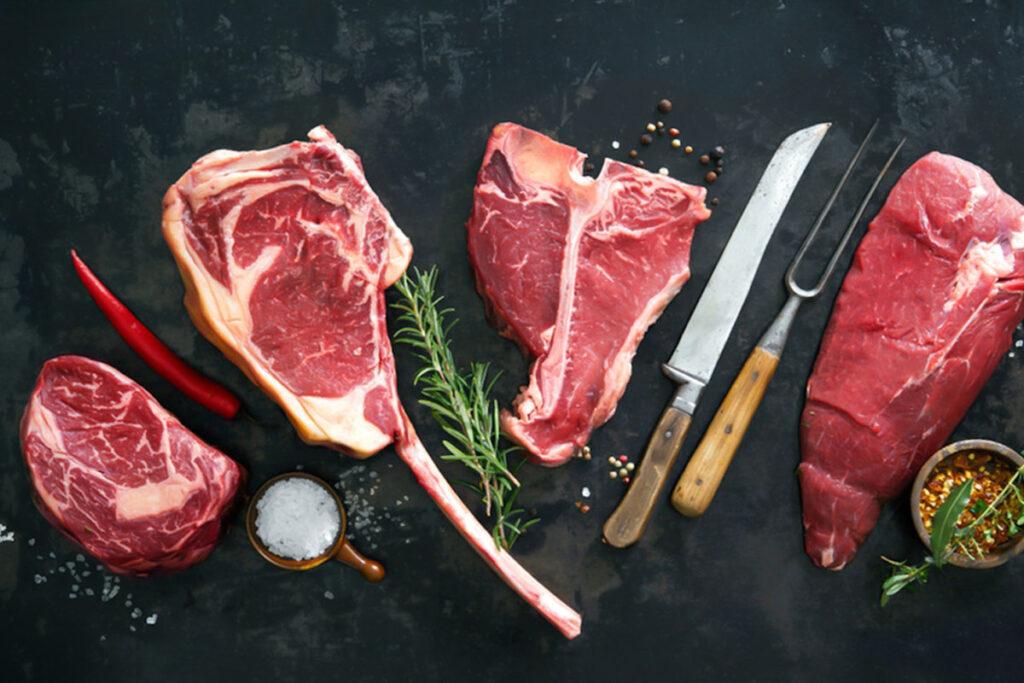
Modern Chefs and Innovative Dishes
As the nose-to-tail movement gains momentum, modern chefs and food enthusiasts are finding innovative ways to integrate these principles into contemporary cuisine. This blend of tradition and innovation is transforming how we think about meat consumption, making it both a culinary adventure and a sustainable practice.
Embracing Tradition in Modern Kitchens
- Reviving Traditional Recipes:
Chefs are delving into traditional Irish recipes, rediscovering methods and ingredients that have been overshadowed by modern convenience foods. Dishes like black pudding, a sausage made from pork blood and oatmeal, and tripe, the edible lining of a cow’s stomach, are making a comeback in gourmet kitchens. - Innovative Techniques:
Modern chefs are not only preserving traditional recipes but also reinventing them. They are using advanced cooking techniques such as sous-vide, which involves vacuum-sealing food and cooking it slowly in a water bath. This method ensures that tougher cuts of meat become tender and flavorful, making them more appealing to contemporary palates.
Creative Dishes That Highlight Nose-to-Tail Principles
- Gourmet Offal:
Offal, or organ meats, is being reimagined in high-end cuisine. Dishes like seared liver with caramelized onions and balsamic reduction or heart tartare with fresh herbs and spices are becoming popular in upscale restaurants. These dishes showcase the rich flavors and textures that organ meats can offer when prepared with skill and creativity. - Bone Broth and Beyond:
Bone broth, once a humble staple, is now a sought-after delicacy. Chefs are enhancing this nutrient-rich liquid with unique ingredients like seaweed, exotic mushrooms, and spices to create flavorful broths that serve as the base for soups, sauces, and even cocktails. - Nose-to-Tail Tasting Menus:
Some restaurants are offering nose-to-tail tasting menus, where diners can experience a variety of dishes made from different parts of the animal. These menus not only educate consumers about nose-to-tail eating but also demonstrate the culinary versatility of lesser-known cuts. - Fusion Cuisine:
The nose-to-tail philosophy is also making its way into fusion cuisine, where traditional Irish ingredients are combined with flavors from around the world. For example, a dish might feature pork cheeks braised in a spicy Asian sauce or lamb neck prepared with Mediterranean herbs and served with Irish root vegetables.
Highlighting Sustainability and Ethical Eating
- Farm-to-Table Movement:
Many chefs who embrace nose-to-tail eating are also part of the farm-to-table movement, which emphasizes sourcing ingredients locally and sustainably. By building relationships with local farmers, these chefs ensure that their meat is ethically raised and processed. - Educational Initiatives:
Some restaurants and culinary schools are offering workshops and classes to teach the public about nose-to-tail eating. These initiatives help demystify the use of lesser-known cuts and promote a more sustainable approach to meat consumption. - Zero-Waste Kitchens:
The principles of nose-to-tail eating align closely with the zero-waste movement. Chefs are finding creative ways to use every part of the animal, from making stocks and sauces with bones to crafting charcuterie from various cuts of meat. This approach not only reduces food waste but also maximizes the culinary potential of each animal.
Case Studies: Notable Chefs and Restaurants
- Fergus Henderson:
A pioneer of the nose-to-tail movement, British chef Fergus Henderson has been a major influence on modern chefs. His restaurant, St. John, in London, is famous for its innovative use of offal and other less common cuts of meat. - JP McMahon:
An Irish chef and advocate for sustainable eating, JP McMahon has been instrumental in promoting nose-to-tail eating in Ireland. His restaurant, Aniar, in Galway, features a menu that emphasizes local, seasonal ingredients and includes a variety of nose-to-tail dishes. - Kevin Thornton:
Another prominent Irish chef, Kevin Thornton, has been known for his creative use of traditional Irish ingredients. He incorporates nose-to-tail principles into his cuisine, highlighting the rich culinary heritage of Ireland.
The Future of Traditional Irish Butchery and Nose-to-Tail Eating
Sustaining the Movement
- Education and Awareness:
One of the most significant ways to sustain the nose-to-tail movement is through education. Culinary schools, food organizations, and chefs can continue to educate both aspiring chefs and the general public about the benefits and techniques of nose-to-tail eating. Workshops, cooking classes, and media campaigns can help demystify lesser-known cuts of meat and encourage more people to embrace this sustainable practice. - Community Support:
Building a community around nose-to-tail eating is crucial for its sustainability. This includes supporting local butchers, farmers, and restaurants that practice nose-to-tail principles. Community events, such as farmers’ markets and food festivals, can showcase nose-to-tail dishes and educate the public about the importance of using the whole animal. - Policy and Regulation:
Advocating for policies that support sustainable farming and ethical butchery practices can help ensure the long-term viability of nose-to-tail eating. This might include subsidies for small-scale farmers, regulations that promote humane animal treatment, and incentives for restaurants and food businesses that minimize waste.
Challenges to Overcome
- Consumer Perceptions:
One of the biggest challenges is changing consumer perceptions and overcoming the “ick” factor associated with certain cuts of meat. Continued efforts to educate and expose people to the culinary potential of offal and other lesser-known cuts can help shift these perceptions. - Economic Viability:
Making nose-to-tail eating economically viable for both producers and consumers can be challenging. Chefs and food businesses need to find ways to make these dishes appealing and accessible without compromising on quality. Additionally, farmers and butchers must be able to price these products competitively while maintaining sustainable practices. - Supply Chain Issues:
Ensuring a consistent and reliable supply of all parts of the animal can be difficult, especially for smaller butchers and restaurants. Building strong relationships within the supply chain and developing efficient distribution methods are essential for overcoming this challenge.
Opportunities for Innovation
- Culinary Creativity:
The nose-to-tail movement offers endless opportunities for culinary creativity. Chefs can experiment with new recipes, cooking techniques, and flavor combinations to create unique and exciting dishes. This innovation can help keep the movement fresh and appealing to a broad audience. - Technological Advances:
Technology can play a significant role in advancing nose-to-tail eating. Innovations in food preservation, cooking equipment, and supply chain management can make it easier to utilize and distribute every part of the animal efficiently. Additionally, digital platforms can help educate and connect people interested in nose-to-tail eating. - Sustainable Practices:
As the world becomes more focused on sustainability, nose-to-tail eating aligns perfectly with broader environmental goals. By reducing food waste and promoting ethical consumption, the movement can contribute to a more sustainable food system. There are opportunities to collaborate with environmental organizations and leverage this alignment to attract more supporters.
Inspiring the Next Generation
- Youth Engagement:
Engaging the next generation is vital for the future of nose-to-tail eating. Introducing children and young adults to these practices through educational programs, school initiatives, and hands-on experiences can inspire a lifelong appreciation for sustainable and ethical eating. - Cultural Heritage:
Highlighting the cultural heritage of traditional Irish butchery can foster a sense of pride and connection. Storytelling, historical exhibits, and cultural events can help people understand and appreciate the rich history behind these practices. - Collaborative Efforts:
Collaboration between chefs, farmers, butchers, educators, and policymakers can create a robust support network for nose-to-tail eating. Sharing knowledge, resources, and best practices can help overcome challenges and drive the movement forward.
Conclusion
The revival of traditional Irish butchery and the nose-to-tail movement is more than a culinary trend; it is a return to sustainable, ethical, and respectful food practices. By embracing the whole animal, we honor the resources provided by nature, reduce waste, and celebrate the rich culinary heritage of Ireland. The future of nose-to-tail eating depends on continued education, innovation, and community support. Together, we can ensure that these principles thrive and contribute to a more sustainable and delicious future.




